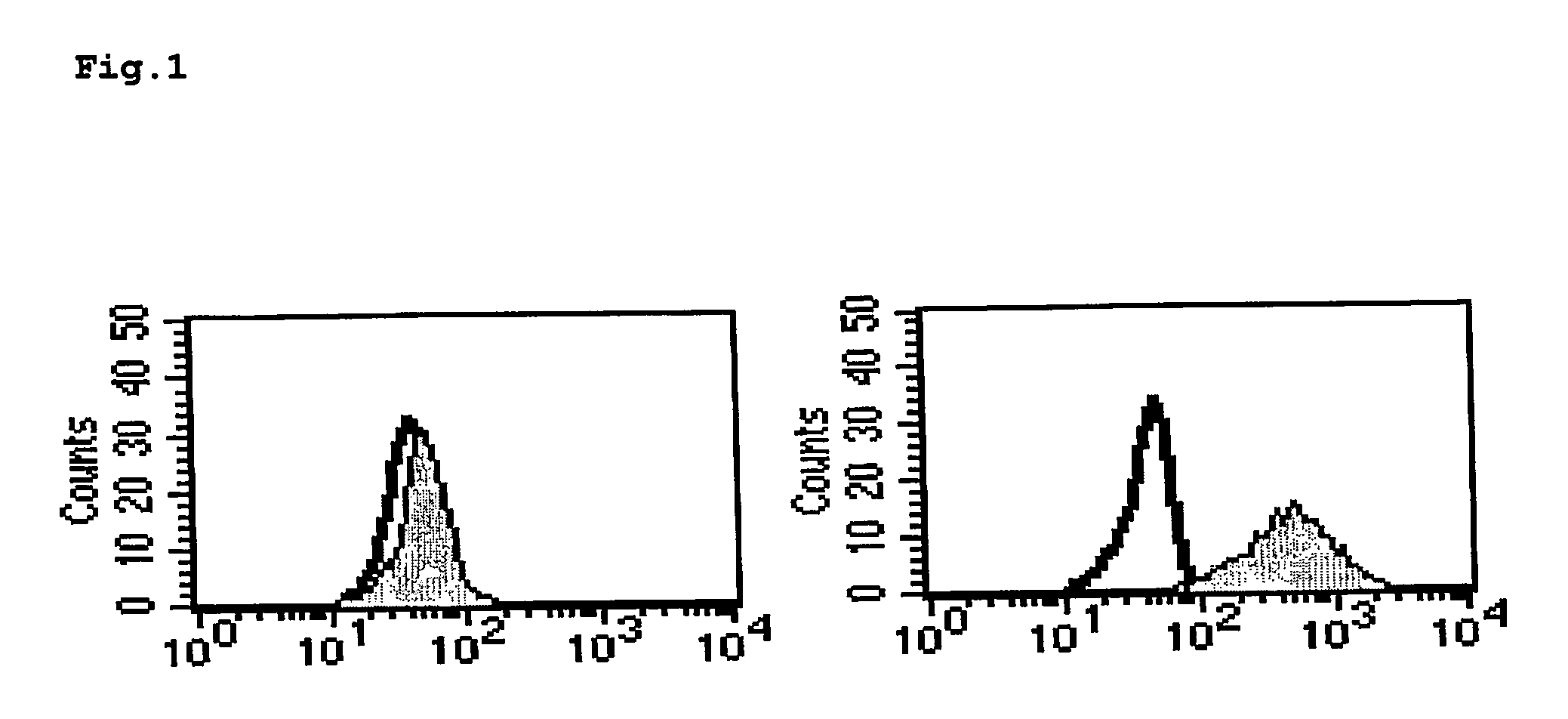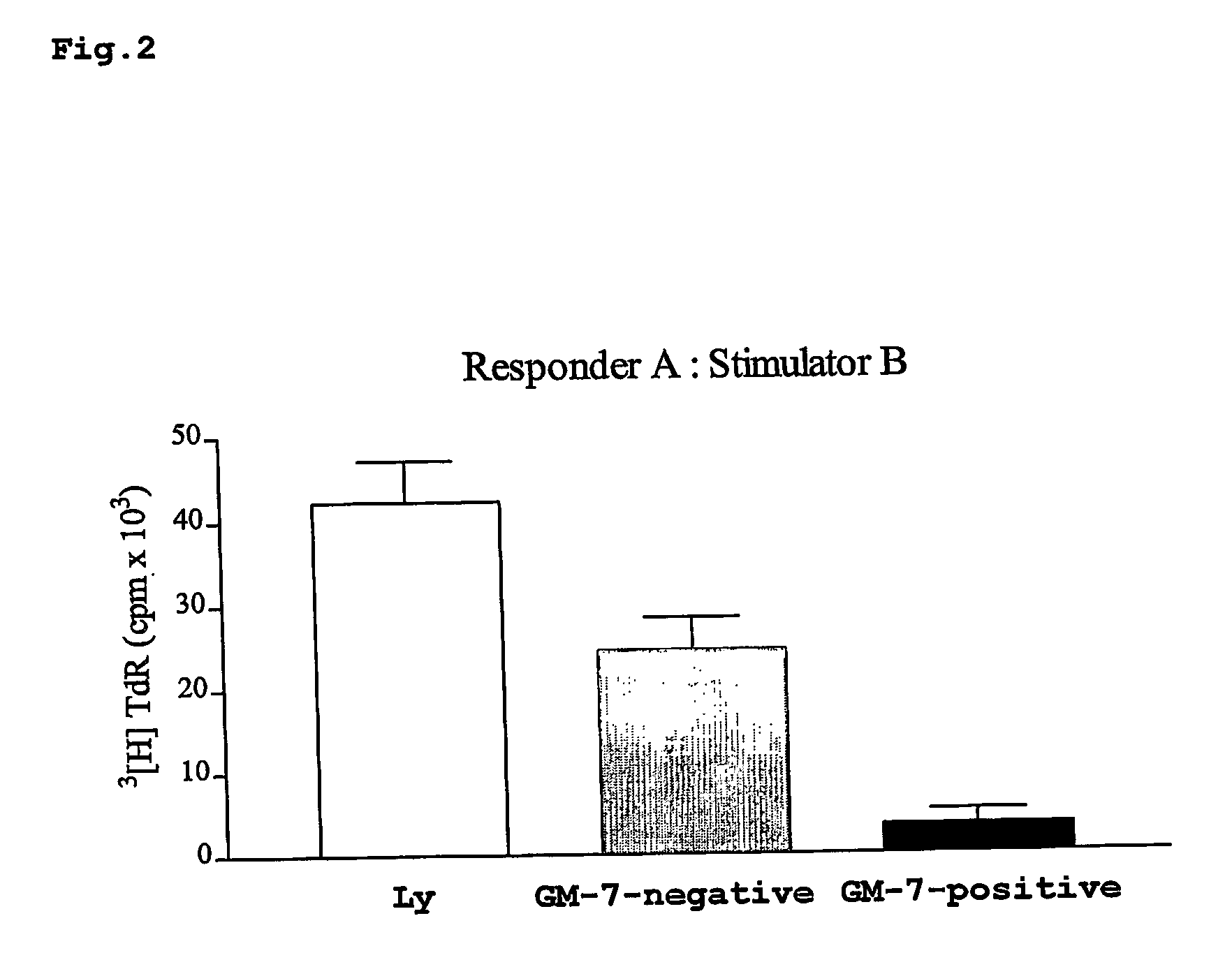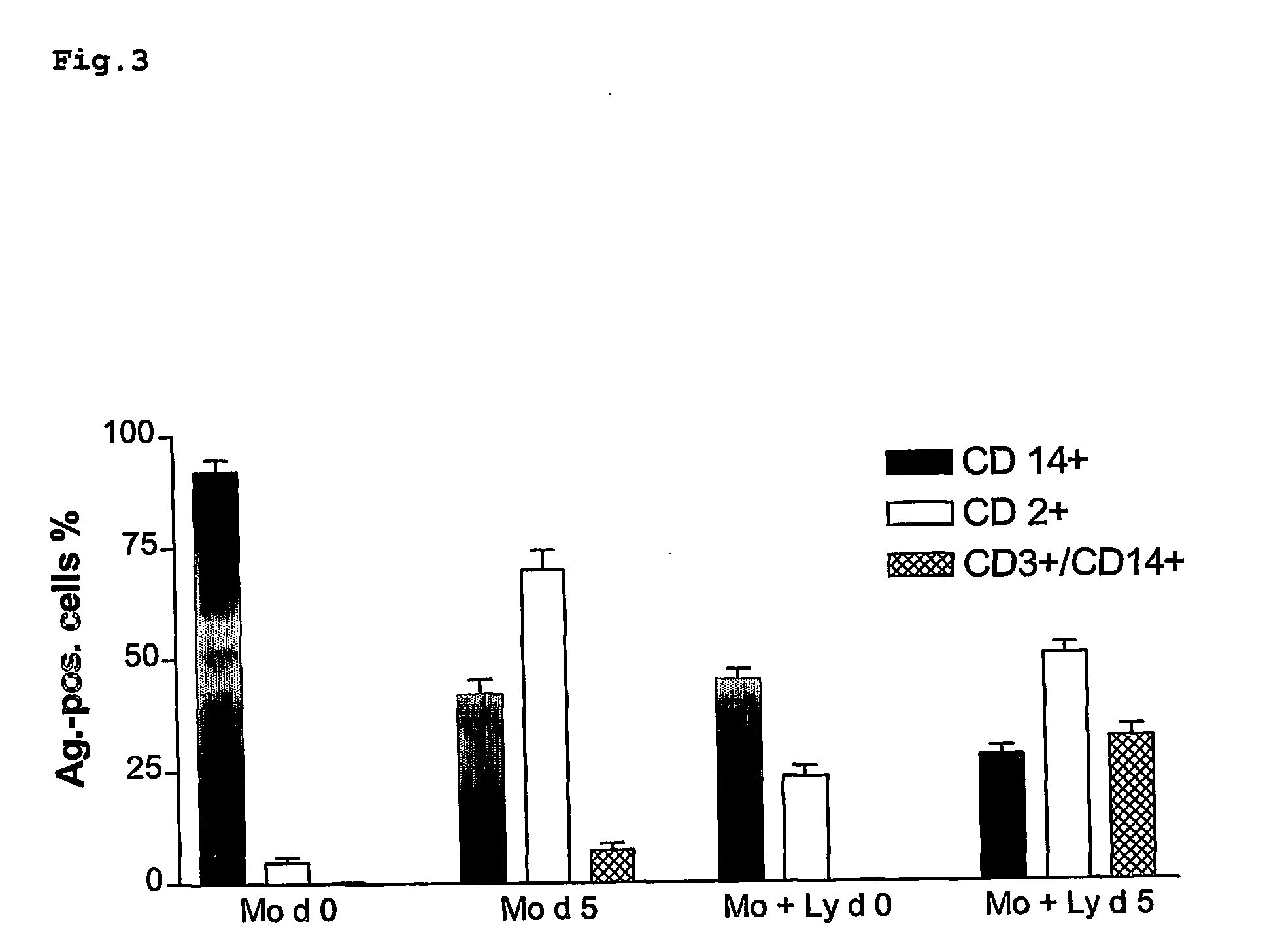Autologous self-tolerance inducing cells of monocytic origin and their use in pharmaceutical preparations
a technology of autologous self-tolerance and monocytic origin, which is applied in the direction of biocide, plant growth regulators, blood/immune system cells, etc., can solve the problems of no effective treatment for the prevention and/or treatment of diseases, no effective therapeutics are available, and many aspects of therapies are problemati
- Summary
- Abstract
- Description
- Claims
- Application Information
AI Technical Summary
Benefits of technology
Problems solved by technology
Method used
Image
Examples
example 1
Separation of Monocytes from Whole Blood
[0150] Whole blood was obtained from human patients by two different methods:
[0151] a) Leukapheresis: Leukapheresis was carried out using a COBE® Spectra™ apheresis system (Gambro BCT, Lakewood, Colo., USA) in the mononuclear mode (MNZ) according to the manufacturer's instructions (COBE Spectra Version 4.7 / 5.1 / 6.0 / 7.0).
[0152] b) Conventional separation of blood components: 450 ml whole blood was mixed in a triple chamber bag set with 63 ml of a stabiliser solution which contained, per litre H2O, 3.27 g of citric acid, 26.3 of g trisodium citrate, 25.5 g of dextrose and 22.22 g of sodium dihydroxy phosphate to avoid coagulation of the blood and to feed the cells. The pH of the solution was 5.6-5.8.
[0153] To separate the components of the blood, “sharp centrifuging” of this mixture was subsequently carried out at 4000 rpm for 7 minutes at 20° C. This resulted in the layering of the corpuscular and non-corpuscular components within three laye...
example 2
Propagation and Modification of the Monocytes
[0160] The cultivation and propagation of the monocytes was carried out in nutrient medium with the following composition:
RPMI 1640 medium440mlFetal calf serum (FCS), alternatively, AB0 compatible serum50mlPenicillin / Streptomycin Solution5mlTotal volume500ml
[0161] The nutrient medium contained 2.5 μg / 500 ml M-CSF.
[0162] The monocytes isolated in Example 1 were suspended in a total quantity of 106 cells in 10 ml of the nutrient medium and transferred onto a Petri dish (100 mm in diameter). The Petri dish had previously been filled with pure inactivated FCS and the FCS had been poured off after 24 hours in order to obtain, in this way, a dish coated with FCS.
[0163] The Petri dish was covered with the appropriate cover and kept for 3 days in an incubator at 37° C. The cells settled at the bottom of the Petri dish after 24 hours. On day two, the supernatant was pipetted off and the Petri dish again filled with 10 ml of fresh nutrient med...
example 3
Binding of the Antibody GM-7 to TAIC
[0183] The monoclonal antibody GM-7 was generated by immunising mice with human TAIC which had been prepared as described in PCT / EP03 / 07551. The hybridoma cells producing the antibody were deposited at the “Deutsche Sammlung fur Mikroorganismen” under the accession no. DSM ACC2542. The results reported below demonstrate that the antibody binds specifically to an antigen which is expressed only on CD14+ cells which had been subjected to the 6 day ex situ modification with M-CSF and 2 day γ-IFN stimulation according to the invention.
[0184]FIG. 1 shows the binding capacity, determined by flow cytometry, of GM-7 to monocytic cells after in vitro modification, i.e. after transformation into TAIC. It can be seen that the CD14-positive monocytes obtained directly from buffy-coat do not bind the antibody GM-7 (left-hand picture; the grey shaded cloud corresponds to the antibody control). In contrast, part of the monocytes express an antigen after cultiv...
PUM
| Property | Measurement | Unit |
|---|---|---|
| Fraction | aaaaa | aaaaa |
| Time | aaaaa | aaaaa |
| Time | aaaaa | aaaaa |
Abstract
Description
Claims
Application Information
 Login to View More
Login to View More - R&D
- Intellectual Property
- Life Sciences
- Materials
- Tech Scout
- Unparalleled Data Quality
- Higher Quality Content
- 60% Fewer Hallucinations
Browse by: Latest US Patents, China's latest patents, Technical Efficacy Thesaurus, Application Domain, Technology Topic, Popular Technical Reports.
© 2025 PatSnap. All rights reserved.Legal|Privacy policy|Modern Slavery Act Transparency Statement|Sitemap|About US| Contact US: help@patsnap.com



